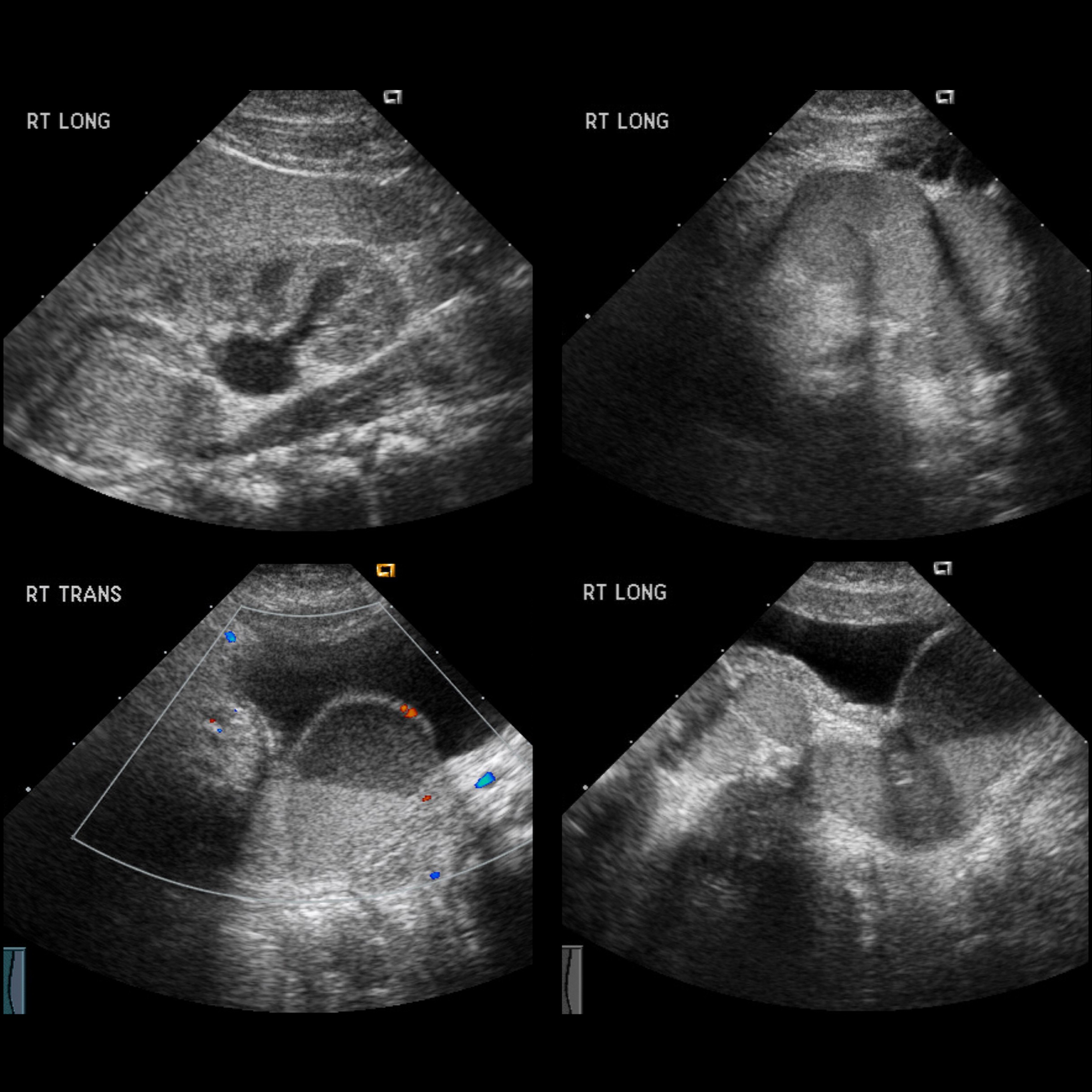malrotated kidney

Abnormal renal rotation (renal malrotation) refers to an anatomical variation in the position of the kidneys, in particular to anomalous orientation of the renal hilum. It may occur unilaterally or bilaterally. It is almost always an asymptomatic incidental finding.
Epidemiology
Malrotation is rare, perhaps under-reported, and in one autopsy series, a prevalence of ~1 in 2000 was reported . It is more common in males.
Gross anatomy
The renal hilum is normally directed anteromedially. The renal hilum is initially oriented anteriorly, but during its ascent from the pelvis, the kidney rotates 90° along its longitudinal axis to its more typical orientation.
Anomalies in this process can result in :
- incomplete rotation or nonrotation (most common): hilum faces anteriorly, ureters are located laterally
- excessive rotation (hyper-rotation): hilum faces posteriorly; renal vessels are located posteriorly
- reversed rotation: hilum faces laterally, renal vessels are located anteriorly, ureter is located laterally
Sagittal rotation, i.e. kidney rotation around its hilum in the sagittal plane, is another type of rotation, which as yet does not have an embryological explanation. It is asymptomatic and is virtually always discovered incidentally on imaging .
Radiographic features
Urography
- malrotation can be demonstrated when the calyces project medially to the renal pelvis
- on CT urography, the renal pelvis of a nonrotated kidney will project anteriorly
Development
The exact cause of malrotation of the kidneys is unclear, though it has been hypothesized that malrotation may occur if the ureteric bud inserts into an abnormal region of metanephric mesenchyme. Its association with renal ectopia suggests that the process of ascent and rotation are related.
Related pathology
- abnormal renal rotation may cause partial ureteropelvic junction (UPJ) obstruction, which can result in increased incidence of urolithiasis and infection
- the malrotated kidney is prone to stasis, increasing the risk of urolithiasis
Siehe auch:
und weiter:

 Assoziationen und Differentialdiagnosen zu Malrotation der Niere:
Assoziationen und Differentialdiagnosen zu Malrotation der Niere:

